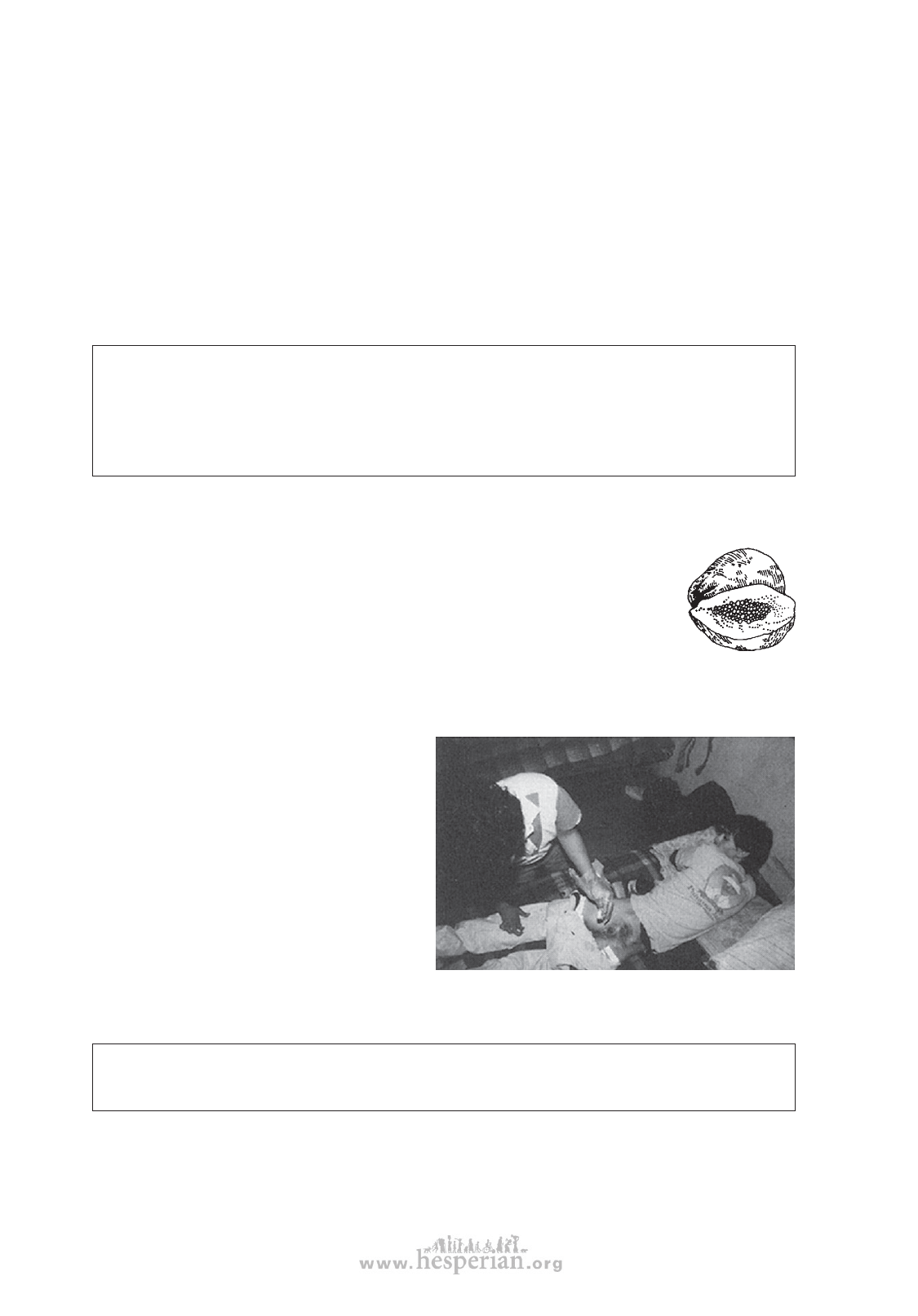
202 chapter 24
If the sore is infected (pus, bad smell, swelling, redness, hot area around the sore, or
the person has fevers and chills), get help from an experienced health worker and:
• Clean out the sore 3 times a day as described.
• If possible, take the person to a ‘clinical laboratory’ for a ‘culture’ to find out what
germs are causing the infection and what medicine will fight it best.
• If a ‘culture’ is not possible, try treating the person with penicillin, tetracycline, or (if
possible) dicloxacillin. (See WTND, p. 351.)
If the sore does not get better, or keeps draining liquid or pus from a deep hole, the
bone may be infected. In this case, special studies, treatment, and possible surgery may
be needed. Try to take the person to a capable medical center. (See Chapter 19.)
Things to remember when dressing a sore
Wear clean gloves while cleaning or filling the pressure sore, applying new bandages,
and disposing of the used bandages. Put used bandages into a plastic bag and burn
or bury it. See p. 160 for information on handling anything with blood or body fluids
on it.
Two traditional treatments that help in curing pressure sores
PAPAYA (PAW PAW)
Papaya has enzymes (chemicals) that digest dead flesh. Cooks use it
to soften meat. The same enzymes can help soften the dead flesh in a
pressure sore, and make it easier to remove. First clean and wash out a
pressure sore that has dead flesh in it. Then soak a sterile cloth or gauze
with ‘milk’ from the trunk or green fruit of a papaya plant and pack this into
the sore. Repeat cleaning and repacking 3 times a day.
HONEY AND SUGAR
Once a pressure sore is free of dead
flesh, filling it 2 to 3 times a day with
honey or sugar helps prevent infection
and speeds healing. This treatment, used
by the ancient Egyptians and recently
rediscovered by modern doctors, works
remarkably well. It is now being used in
some American and British hospitals.
To make filling the sore easier, mix
honey with ordinary sugar until it forms
a thick paste. This can easily be pressed
deep into the sore. Cover the sore with a
thick gauze bandage.
A village rehabilitation worker treats a
young man’s pressure sores with a paste
made by mixing honey and sugar.
CAUTION: It is important to clean out and refill the sore at least 2 times a day. If the honey or sugar
becomes too diluted with liquid from the sore, it will feed germs rather than kill them.
Molasses can also be used. In Colombia, South America, doctors shave thin pieces off
blocks of raw sugar and put these into the sore.
Disabled village Children